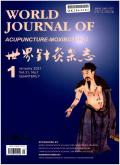Non-pharmacological interventions for temporomandibular disorders: A systematic review and meta-analysis
IF 1.3
4区 医学
Q4 INTEGRATIVE & COMPLEMENTARY MEDICINE
引用次数: 0
Abstract
Background
A temporomandibular disorders (TMDs) is a musculoskeletal and neuromuscular condition that affects the temporomandibular joint, masticatory muscles, and associated tissues. Non-pharmacological interventions are currently considered as potential therapies for TMDs. However, high-quality systematic reviews and meta-analyses evaluating their clinical efficacy are lacking.
Objective
This study aimed to evaluate the clinical efficacy of non-pharmacological interventions for TMDs, focusing on their impact on pain relief, jaw mobility, and functional improvement. Specifically, we aimed to compare the effectiveness of four non-pharmacological interventions, including acupuncture, exercise, occlusal splinting, and laser therapy, for treating TMDs.
Methods
Comprehensive searches for randomized controlled trials (RCTs) were conducted in PubMed, Web of Science, Scopus, Embase, Cochrane Central Register of Controlled Trials, China National Knowledge Infrastructure, China Biomedical Literature Database (SinoMed), VIP, and Wanfang databases. The primary outcome was visual analog scale (VAS) score. The secondary outcomes included pain-free mouth opening, maximum assisted and unassisted mouth opening, and occurrence of adverse events. We used the Cochrane Risk of Bias tool and the Grading of Recommendations Assessment, Development, and Evaluation approach to assess the risk of bias and the quality of evidence. The meta-analysis was performed using RevMan 5.4 software.
Results
A total of 22 RCTs involving 717 patients with TMDs were included. Non-pharmacological interventions significantly reduced VAS scores (n=19; mean difference [MD]= –1.86, 95 % confidence interval [CI] –2.40 to –1.31; Z=6.68; P<0.05) and improved the pain-free mouth opening (n=6; MD=6.92, 95 % CI 4.91 to 8.94; Z=6.73; P<0.05) and maximum unassisted mouth opening (n=10; MD=4.05, 95 % CI 2.08 to 6.02; Z=4.04; P<0.05) in patients with TMDs. However, non-pharmacological interventions did not show a significant effect on maximum assisted mouth opening (n=2; MD=0.33, 95 % CI –4.16 to 4.82; Z=0.15; P=0.88). Only one RCT reported the occurrence of adverse events. Subgroup analysis showed that acupuncture (n=6; MD= –1.52, 95 % CI –2.86 to –0.18; Z=2.22; P=0.03), exercise (n=4; MD= –1.12, 95 % CI –1.94 to –0.31, Z=2.70; P<0.05), occlusal splint (n=5; MD= –2.00, 95 % CI –2.67 to –1.33, Z=5.88; P<0.05), and laser therapy (n=4; MD= –2.81, 95 % CI –3.89 to –1.73, Z=5.10, P<0.05) were significantly superior to control treatments in reducing VAS scores. In addition, acupuncture (n=2; MD=6.50, 95 % CI 3.87 to 9.13; Z=4.85; P<0.05), occlusal splint (n=2; MD=8.33, 95 % CI 4.41 to 12.24; Z=4.17; P<0.05), and laser therapy (n=2; MD=6.09, 95 % CI 0.86 to 11.32; Z=2.28; P=0.02) significantly improved pain-free mouth opening, whereas exercise (n=2; MD=6.84, 95 % CI 3.16 to 10.51; Z=3.65; P<0.05) and occlusal splint (n=2; MD=4.93, 95 % CI 1.66 to 8.19; Z=2.96; P<0.05) increased maximum unassisted mouth opening.
Conclusion
Nonpharmacological interventions have significant efficacy in relieving pain and enhancing pain-free mouth opening and maximum unassisted mouth opening in patients with TMDs. Specifically, acupuncture, exercise, occlusal splinting, and laser therapy significantly alleviate pain in patients with TMDs. Occlusal splinting showed good effects in improving pain-free mouth opening and maximum unassisted mouth opening, while acupuncture and laser therapy helped improve pain-free mouth opening. Exercise significantly improved maximum unassisted mouth opening. These findings support the application of these treatments in clinical practice and provide evidence to inform future conservative management guidelines for TMDs.
颞下颌疾病的非药物干预:系统回顾和荟萃分析
颞下颌疾病(TMDs)是一种影响颞下颌关节、咀嚼肌和相关组织的肌肉骨骼和神经肌肉疾病。非药物干预目前被认为是tmd的潜在治疗方法。然而,缺乏高质量的系统评价和评估其临床疗效的荟萃分析。目的评价非药物干预治疗颞下颌关节痛的临床疗效,重点关注其对疼痛缓解、下颌活动能力和功能改善的影响。具体来说,我们的目的是比较四种非药物干预措施的有效性,包括针灸,运动,咬合夹板和激光治疗,治疗颞下颌关节病。方法综合检索PubMed、Web of Science、Scopus、Embase、Cochrane中央对照试验库、中国国家知识基础设施、中国生物医学文献数据库、维普数据库和万方数据库,检索随机对照试验(RCTs)。主要观察指标为视觉模拟评分(VAS)。次要结果包括无痛张嘴,最大辅助和非辅助张嘴,以及不良事件的发生。我们使用Cochrane偏倚风险工具和分级推荐评估、发展和评价方法来评估偏倚风险和证据质量。meta分析采用RevMan 5.4软件进行。结果共纳入22项随机对照试验,共纳入717例tmd患者。非药物干预显著降低VAS评分(n=19;平均差[MD]= -1.86, 95%置信区间[CI] -2.40 ~ -1.31;Z = 6.68;P<0.05),改善无痛开口(n=6;MD=6.92, 95% CI 4.91 ~ 8.94;Z = 6.73;P<0.05)和最大无辅助张嘴量(n=10;MD=4.05, 95% CI 2.08 ~ 6.02;Z = 4.04;p < 0.05)。然而,非药物干预对最大辅助张嘴没有显着影响(n=2;MD=0.33, 95% CI -4.16 ~ 4.82;Z = 0.15;P = 0.88)。只有一项随机对照试验报告了不良事件的发生。亚组分析显示,针灸(n=6;MD= -1.52, 95% CI -2.86 ~ -0.18;Z = 2.22;P=0.03),运动(n=4;MD= -1.12, 95% CI -1.94 ~ -0.31, Z=2.70;p < 0.05),咬合夹板(n=5;MD= -2.00, 95% CI -2.67 ~ -1.33, Z=5.88;p < 0.05),激光治疗(n=4;MD= -2.81, 95% CI -3.89 ~ -1.73, Z=5.10, P<0.05)在降低VAS评分方面显著优于对照治疗。此外,针灸(n=2;MD=6.50, 95% CI 3.87 ~ 9.13;Z = 4.85;p < 0.05),咬合夹板(n=2;MD=8.33, 95% CI 4.41 ~ 12.24;Z = 4.17;p < 0.05),激光治疗(n=2;MD=6.09, 95% CI 0.86 ~ 11.32;Z = 2.28;P=0.02)显著改善无痛张嘴,而运动组(n=2;MD=6.84, 95% CI 3.16 ~ 10.51;Z = 3.65;p < 0.05)和咬合夹板(n=2;MD=4.93, 95% CI 1.66 ~ 8.19;Z = 2.96;(p < 0.05)增加了最大无辅助张嘴。结论非药物干预对缓解疼痛、增强tmd患者无痛张嘴和最大无辅助张嘴有显著疗效。具体来说,针灸、运动、咬合夹板和激光治疗可以显著减轻颞下颌关节病患者的疼痛。咬合夹板改善无痛张嘴和最大无辅助张嘴效果较好,针刺和激光治疗改善无痛张嘴效果较好。运动显著提高最大无辅助张嘴。这些发现支持了这些治疗方法在临床实践中的应用,并为未来的tmd保守治疗指南提供了证据。
本文章由计算机程序翻译,如有差异,请以英文原文为准。
求助全文
约1分钟内获得全文
求助全文
来源期刊

World Journal of Acupuncture-Moxibustion
INTEGRATIVE & COMPLEMENTARY MEDICINE-
CiteScore
1.30
自引率
28.60%
发文量
1089
审稿时长
50 days
期刊介绍:
The focus of the journal includes, but is not confined to, clinical research, summaries of clinical experiences, experimental research and clinical reports on needling techniques, moxibustion techniques, acupuncture analgesia and acupuncture anesthesia.
 求助内容:
求助内容: 应助结果提醒方式:
应助结果提醒方式:


